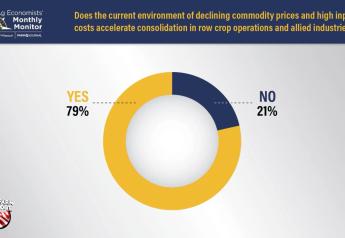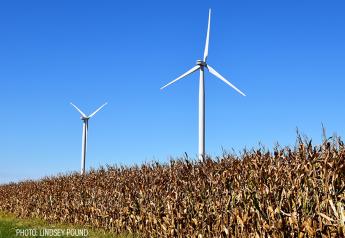Evaluating Early-Season Hail Damage in Corn

This article was originally written for the University of Nebraska-Lincoln CropWatch.
Several questions have arisen about the yield potential of surviving corn plants following an early-season hail event. Previous studies have attempted to estimate this yield potential through artificial defoliation with highly variable results. Complete defoliation of V2 to V5 corn resulted in yield losses from 8.7% to 23%, respectively.
In contrast, shredding or removing up to two-thirds of corn leaves from V2 to V5 plants resulted in less than 4% yield loss. Complete defoliation of V4 corn caused yield loss of 1.1% to 25.9% and was primary attributed to reduced ear size as a result of reduced leaf area and, to a lesser extent, a small change in plant population.
Vasilas et al. evaluated the potential yield impact of uneven damage between plants in the same row by comparing plots with defoliation of every other corn plant to those with all plants defoliated during the early stages of plant development (~V4).
Average grain yield was reduced by 12.3% when all plants were defoliated and by 8.3% when only half of the plants in the plot were defoliated.
Studies have also compared responses among corn hybrids. Johnson cut two early-, mid-, and late-season hybrids at the first leaf collar during V2 and found no consistent relationship between hybrid maturity and yield loss; losses ranged from 5.1% to 15.8%.
Corn plants cut at the first collar during V4 showed yield responses ranging from an increase of 3.1% to losses of 24.4%. Nevertheless, actual yield increases are unlikely in hailed fields and when they have occurred are typically associated with drought conditions.
Researchers hypothesize that early-season hail damage may reduce water uptake, leaving more water available during the latter half of the growing season when water demand is high. Such situations are highly unpredictable and not recommended as a means of managing water use.
Hail and Bacterial Plant Pathogens
Variations in yield potential of a hail-damaged field may be due to presence of other yield-limiting factors. Plant damage incurred during hailstorms can allow bacterial pathogens to enter the plant.
Goss’s wilt (Clavibacter michiganensis subsp. nebraskensis (Vidaver and Mandel)) is a bacterial plant pathogen that is most common and severe following hailstorms. Inoculum of Goss’s wilt can remain viable on corn residue for up to 10 months.
Infection occurs as a result of rain splash from crop-infected residue onto open plant wounds during a hailstorm. Rapid disease development occurs in a warm moist environment. The optimal growth for Goss’s wilt is between 75F and 82F, with arrested pathogen development and death occurring by 100F.
Fortunately, temperatures in that range are rare in Nebraska during spring.
Goss’s wilt symptoms first appear as water-soaked lesions parallel to leaf veins with bacterial exudates that appear shiny. Yield losses of susceptible hybrids typically range from 44% to 63% when comparing resistant and susceptible hybrids.
Preventative management strategies, such as crop rotation and resistant hybrids, are the most effective means of reducing the impact from this pathogen. Other pathogens such as bacterial stalk rots have the potential to cause additional yield losses in corn fields.
Bacterial plant pathogens can be difficult to detect or evaluate within seven days of a hail event. Farmers should consider cropping history and environmental conditions when considering additional risk or yield loss from these pathogens in hailed fields.
Research is being conducted at UNL to better understand the impact of bacterial pathogens in corn follow an early season hail event. If you suspect additional losses from disease in your field after hail, contact Justin McMechan (justin.mcmechan@unl.edu).
Resources
For more information on assessing hail damage on corn, see Nebraska Extension Circular 126, Evaluating Hail Damage to Corn.
Recommendations
Patience is the best advice following a hailstorm. Emotions run high when hail decimates fields! Wait 7-10 days following the storm to assess damage and allow for plant recovery. The risk of additional yield losses from bacterial plant pathogens increases under continuous corn.







